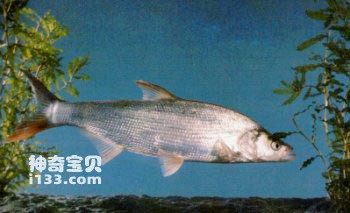Culter mongolicus belongs to the order Cypriniformes, family Cyprinidae, subfamily Culterae, and genus Culter. Commonly known as: Hongshaozi, pointed red Shaozi. English name: Mongolian culter.
The body is long, the sides are flat, the back of the head is straight, and the back of the head is slightly raised. The muzzle is slightly protruding, the mouth is pointed, the lower jaw is slightly protruding, and the cleft of the mouth is slightly oblique. There are ventral ribs at the base of the pelvic fin and even the anus, and the dorsal fin has smooth hard spines; the caudal fin is deeply bifurcated, and the ends of the two lobes are pointed, with the lower lobe slightly longer than the upper lobe. The back and head of the body are light brown, the abdomen is silvery white, the dorsal fin is gray, the upper lobes of the pectoral fin, pelvic fin, anal fin and caudal fin are all light yellow, and the lower lobes of the caudal fin are orange.

It usually lives in the middle and upper layers of rivers or lakes with slow water flow. It swims quickly and its activities are scattered. They breed in clusters from May to July, and spend the winter mostly in deep rivers or deep pools of lakes. Juveniles feed on zooplankton and aquatic insects; adults feed on small fish.
It is widely distributed and has been recorded in Heilongjiang, Yellow River, Huaihe River, Yangtze River, Qiantang River, Hainan Island, Pearl River and other water systems. Seen abroad in Russia.
Although the growth rate and individual size of this fish are not as good as those of the turtle, it is widely distributed and accounts for a certain proportion of natural production. Common individuals weigh about 500 grams, and the largest individual can reach 4 kg. The meat is fresh and tender but not fishy. Its protein content is 15.3% and fat is 5.0%, so it has great economic value.
The meat is sweet, warm, diuretic and has the effect of eliminating edema. It can be used as medicine to treat weight loss, edema, and postpartum cramps.
animal tags:
We created this article in conjunction with AI technology, then made sure it was fact-checked and edited by a Animals Top editor.